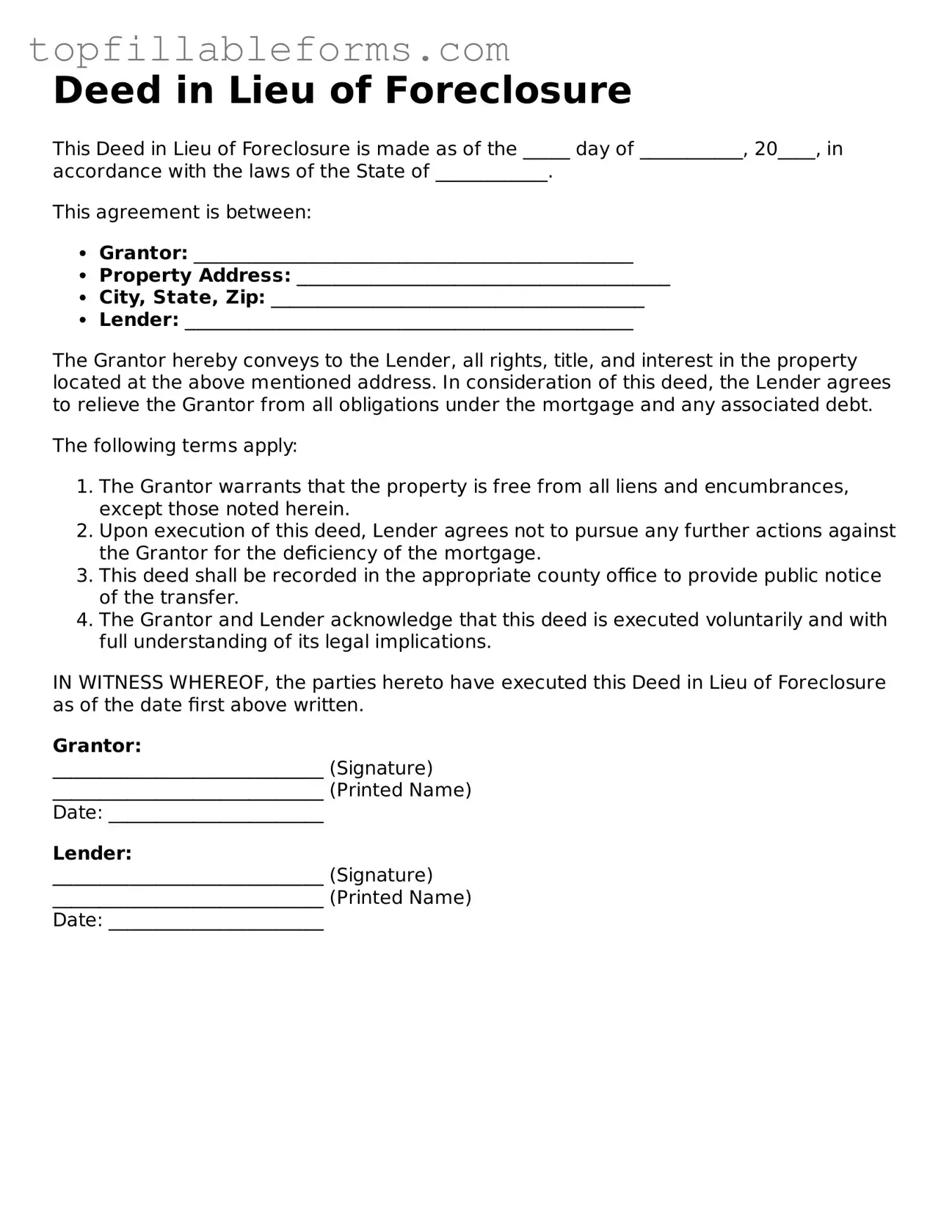Deed in Lieu of Foreclosure
This Deed in Lieu of Foreclosure is made as of the _____ day of ___________, 20____, in accordance with the laws of the State of ____________.
This agreement is between:
- Grantor: _______________________________________________
- Property Address: ________________________________________
- City, State, Zip: ________________________________________
- Lender: ________________________________________________
The Grantor hereby conveys to the Lender, all rights, title, and interest in the property located at the above mentioned address. In consideration of this deed, the Lender agrees to relieve the Grantor from all obligations under the mortgage and any associated debt.
The following terms apply:
- The Grantor warrants that the property is free from all liens and encumbrances, except those noted herein.
- Upon execution of this deed, Lender agrees not to pursue any further actions against the Grantor for the deficiency of the mortgage.
- This deed shall be recorded in the appropriate county office to provide public notice of the transfer.
- The Grantor and Lender acknowledge that this deed is executed voluntarily and with full understanding of its legal implications.
IN WITNESS WHEREOF, the parties hereto have executed this Deed in Lieu of Foreclosure as of the date first above written.
Grantor:
_____________________________ (Signature)
_____________________________ (Printed Name)
Date: _______________________
Lender:
_____________________________ (Signature)
_____________________________ (Printed Name)
Date: _______________________
